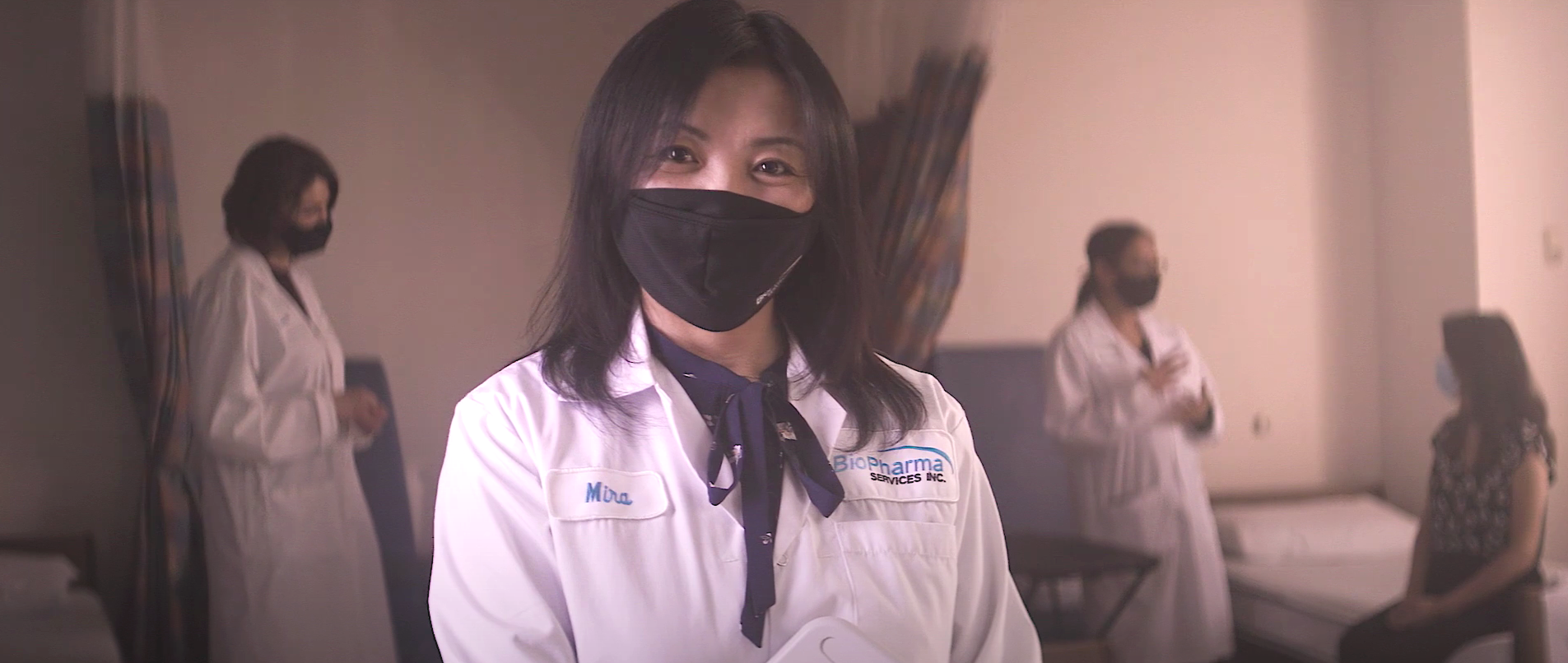What are Washout Periods & Why do they matter?

Eager volunteers, driven by a sense of community and a desire to contribute, sometimes find themselves confused and questioning the necessity of waiting 30 or 56 days before participating in another study. To share a snippet, I recently had a heartfelt conversation with an elderly lady over the phone. She expressed a profound yearning for the unique sense of community and belonging that she had discovered at BioPharma Services.
Then, there is the contrasting tale of a young lad, driven by the relentless “FOMO” phenomenon, or the ‘Fear of Missing Out.’ He was concerned that his friends were actively partaking in ongoing studies, and he did not want to be left behind! These stories are just the tip of the iceberg when it comes to the dedicated individuals who are the backbone of clinical research. For them, the term “washout” is a frequent refrain, a necessary pause before embarking on the next stage of their research journey.
Their commitment to a healthy lifestyle, regular exercise, and careful dietary choices is commendable. Yet, the scientific narrative extends beyond these practices and the concept of a washout period delves into the realm of Pharmacokinetics – a term that might sound complex but is, in essence, the study of how drugs are absorbed, distributed, metabolized, and excreted by the body. This forms the very foundation of clinical research. So, why is there really a need for a “washout period”?
The Significance of a Washout & Study Design
Clinical trials are intricate puzzles and designing them involves answering a myriad of questions. You are not just comparing a new drug to an existing one or studying how a medication targets a specific condition; you’re crafting an intricate web of scientific inquiry. It is about defining research questions, minimizing variation, employing randomization, ensuring blinding, working with placebos, selecting control groups, targeting specific populations, establishing endpoints, determining the optimal sample size, and most importantly, integrating a washout period (1).

Why is it so crucial?
- Even the smallest remnants of a prior substance can interact with a new intervention, potentially leading to distorted results and, even worse, endangering participant safety and study validity;
- When a new drug is introduced, it should be evaluated in isolation to understand its true effects. Remnants of a previous medication in the system may lead to unpredictable outcomes and potentially harmful effects on participants;
- By establishing a clear baseline through washout periods, researchers can collect data with greater accuracy. This not only enhances the scientific validity of the study but also ensures the safety of participants by minimizing potential risks associated with drug interactions. (3,5)
The duration of these washout periods varies, usually falling within the 30 to 56-day period. This duration is closely tied to the half-life of the previously administered compound, which is the time it takes for half of a substance to be eliminated from the body. The FDA (U.S. Food and Drug Administration), a key regulatory authority, has specific guidelines for the duration of the washout period, depending on the type of drug being studied.
For immediate release (IR) products, the FDA recommends a washout period of at least 5.5 half-lives. This ensures that there’s ample time for the effects of the first dose to dissipate entirely before the second round begins. On the other hand, when dealing with controlled release (CR) products, the FDA advises an even longer washout period of at least 8.5 half-lives. This extended duration is necessary to minimize the chances of any potential carry-over residual effects. (2)
Why is this so critical? Well, the goal of these studies is to obtain accurate and unbiased results. If there are lingering effects from the previous dose or its metabolites, it could distort the outcomes, making it difficult to assess the true impact of the new medication or formulation.
So, by adhering to these washout period recommendations, researchers ensure that each dosing period begins on a clean slate, free from any interference. In some conditions like multiple sclerosis, a shorter washout reduces the hazard of relapse but also the risk of disease reactivation. Conversely, longer washouts were correlated with a higher risk of disease activity. (4)
Blood Donation & Washout Periods
Clinical trials often involve collecting blood samples to assess various parameters such as drug levels, biomarkers, and safety measures, and the timing of these blood draws is intricately connected to the concept of washout periods.
To exemplify the significance of blood volume, consider the common requirement in study exclusion criteria that recruiters tend to stress on: no tattoos or body piercings within 30 days before dosing, loss of whole blood 1-2 months prior to dosing, or no surgeries within 3-6 months before dosing. These might seem peculiar and a repetition for every study, but they are intrinsically linked to the interplay of blood donation and washout. Whether it is donation of whole blood or a specific component such as platelets or plasma, the same applies. Eg: No plasma donation by plasmapheresis 7 days prior to dosing either.
A unit of whole blood is about 450 ml but in most cases for studies up to 499 ml, sets an average lockout of 30 days and above 500 ml sets a lockout of 56 days. The relevance is, plasma is usually replaced within 24 hours however, red blood cells are replaced by the bone marrow into the circulatory system within 3-4 weeks, while it takes approximately 6-8 weeks for the iron to be replaced when lost. (7)

Lockout Period Duration
The lockout or ‘washout’ period after each study is the amount of time after study completion where you are prohibited from enrolling in other studies with us and other companies. The purpose of this lockout is to ensure we are not taking a large amount of blood in a short time span, and the medications have been fully metabolised and excreted from your body. Typically, the standard lockout period is 30 days for most studies.
Depending on the medication or blood volume taken, the lockout period can be 56 days, sometimes even a 6 month wait before or after a study. For those who occasionally participate, this would not be a major concern. However, for regular volunteers who prefer steady studies every few months, they might want to think twice about a high paying study that locks them out for multiple months!
Blood Volume Required
This factor is particularly important for individuals who may be sensitive to the volume of blood drawn in a short period. Many studies take around 150-300ml in total over the span of a week or two, which is manageable. Other studies can take over 500ml of blood, similar to the amount taken at a single blood donation.
It is important to assess whether your veins can withstand frequent blood draws and the prolonged use of catheters. Repeated blood draws can put stress on your veins, potentially causing discomfort or complications, especially if they are smaller or more fragile. You can discuss any concerns you have regarding this issue with the screening team before deciding to participate. Blood volume taken during a study also affects your lockout period – the amount of time after a study when you are ineligible for other studies – which is another factor to consider on its own.
You can learn more about medical screening process in the following blog: Navigating the medical screening process as a clinical trial participant
What does BioPharma do to uphold the highest standards of research integrity? Decoding the Clinical RSVP System at Screening
While the quest for knowledge and the well-being of participants is paramount, ensuring the integrity of every study is non-negotiable. At BioPharma Services Inc, we take our commitment seriously, and one of the tools we rely on to maintain the highest standards of research integrity is clinicalRSVP’s (Research Subject Verification Protocol), cutting-edge biometric fingerprint technology. It is a clearinghouse used by clinical research sites to prevent the issue of dual enrollment.
We understand that volunteers may sometimes overlook the importance of these periods due to their enthusiasm to participate in research. Dual enrollment occurs when a participant attempts to take part in multiple clinical research studies simultaneously. Not only does this pose ethical concerns, but it also muddles the reliability of the data collected, potentially compromising the results of our studies.
This system offers a real-time solution to ensure that participants are eligible and only participate in one study at a time. Using biometric fingerprint technology, it’s a secure, confidential, and incredibly efficient way to authenticate participants before enrollment. Dual enrollment, where participants attempt to take part in multiple clinical research studies simultaneously, is not just a logistical challenge but also a potential threat to the precision and accuracy of our study outcomes. By implementing clinicalRSVP, we not only enhance the safety of our participants but also significantly lower the risks associated with such challenges. (8)
In a world where the reliability of data and the protection of our participants are of utmost importance, BioPharma’s adoption of clinicalRSVP’s biometric fingerprint technology stands as a testament to our unwavering dedication to maintaining the highest research standards. Our screening and recruitment team, working in harmony with this technology, contributes to safeguarding the future of clinical research at BioPharma Services.
We take pride in our commitment to research integrity and in the incredible efforts of our screening and recruitment team, who are dedicated to the safety and well-being of our volunteers while ensuring the accuracy and reliability of our clinical studies.
In conclusion, the washout period, often misunderstood as a mere delay, stands as a testament to the depth of clinical research. It is a symbol of scientific rigor, ensuring participant safety, and generating results that are accurate, reliable, and meaningful.
The volunteers who walk through the doors of BioPharma Services bring with them a commitment that aligns seamlessly with the profound importance of the washout period – a bridge between dedication and scientific excellence. While enthusiasm is commendable, safety should always be the top priority. The eagerness to participate should be balanced with the need for thorough safety precautions to protect the well-being of volunteers.

Register below, and our friendly recruiters will reach out to assess your eligibility for upcoming clinical trials. Together, we can combine commitment with safety measures to advance scientific research. Join us on this important journey!
References
- Evans, S. R. (2010). Fundamentals of Clinical Trial Design. Journal of Experimental Stroke and Translational Medicine, 3(1), 19–27. https://doi.org/10.6030/1939-067x-3.1.19
- Chow, S. (2014). Bioavailability and bioequivalence in drug development. WIREs Computational Statistics, 6(4), 304–312. https://doi.org/10.1002/wics.1310
- Lim, C.-Y., & In, J. (2021). Considerations for crossover design in Clinical Study. Korean Journal of Anesthesiology, 74(4), 293–299. https://doi.org/10.4097/kja.21165
- Naegelin, Y., Rasenack, M., Andelova, M., Von Felten, S., Fischer-Barnicol, B., Amann, M., Mehling, M., Kappos, L., Sprenger, T., & Derfuss, T. (2018). Shortening the washout to 4 weeks when switching from natalizumab to fingolimod and risk of disease reactivation in multiple sclerosis. Multiple Sclerosis and Related Disorders, 25, 14–20. https://doi.org/10.1016/j.msard.2018.07.005
- Tse, F. L. S. (2013). Journals of Drug Chemistry & Chemical Toxicology – Pharmacokinetic Evaluation in Drug Development – Significance and Implication in Drug Discovery and Development. Drug Chem Toxicol, 36(4), 391-396.
- Shimomura, K., & Kato, K. (2012). The Drug Metabolism and Pharmacokinetics for Drug Development – Significance in Drug Development. Drug Metab Pharmacokinet, 27(5), 525-530.
- Blood Donor Counselling: Implementation Guidelines. Geneva: World Health Organization; 2014. Annex 13, Example of frequently asked questions. Available from: https://www.ncbi.nlm.nih.gov/books/NBK310558/
- Independent Data Integrator, L. (2023). CLINICALRSVP stops Dual Enrollment by authenticating study participants in real-time with biometric fingerprint technology. clinicalRSVP. https://clinicalrsvp.com/
BioPharma Services, Inc., a Think Research Corporation and clinical trial services company, is a full-service Contract Clinical Research Organization (CRO) based in Toronto, Canada, specializing in Phase 1 clinical trials 1/2a and Bioequivalence clinical trials for international pharmaceutical companies worldwide. BioPharma has clinical facilities both in the USA and Canada with access to healthy volunteers and special populations.
